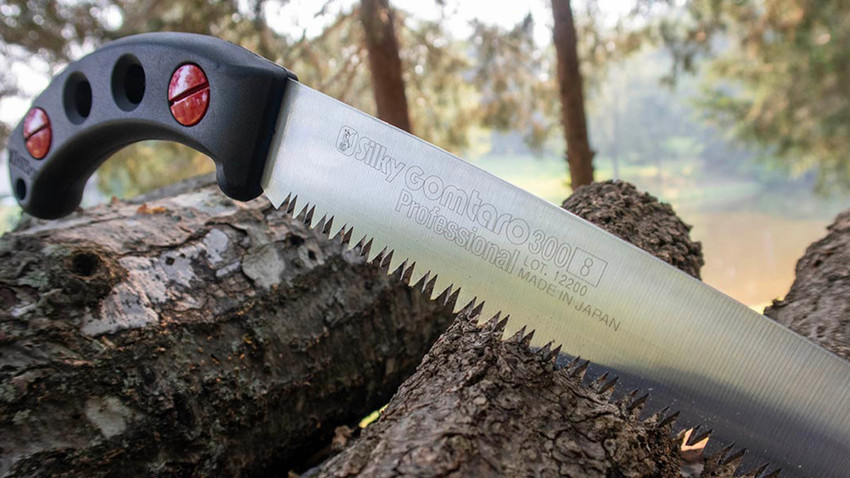What Makes Silky Saws Teeth Special?
The patented MIRAI-ME teeth in Silky saws are precision ground in the blade, each with four cutting surfaces. The teeth are “non-set” so that the blade cuts straight into the wood, making a much finer incision than a traditional western saw is able to make, breaching only about half the wood cells of a Western saw.
Silky blades are ground bi-concave. That means that the bottom part, the edge with the teeth, is the thickest part of the saw blade. The top of the saw blade is slightly thinner than the cutting edge. And the blade is thinnest in the middle. As a result, you need less power to saw, cutting through wood goes extremely fast. One of every few teeth–exactly how many depends on the saw–is ground to the outside to discharge sawdust. And the saw makes a very clean cut without breaking or tearing the wood. You get a fine, smooth saw cut with few splinters.
Silky’s patented MIRAI-ME design means Silky saws can be used for crosscutting perpendicular to the grain, rip-cutting parallel to the grain, and diagonal cutting. Pruning, Silky saws make a smooth cut so the tree wound can be easily overgrown. Woodworking, the smooth saw cut produces a fine finish that requires minimal sanding.
Silky saws have teeth configurations from extra fine to extra-large. Every saw’s teeth configuration is noted on the blade next to the saw length.

